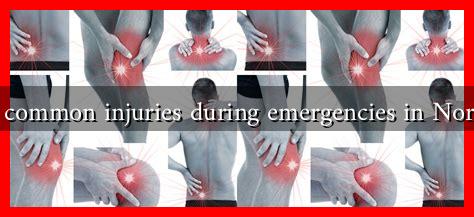-
Table of Contents
- What are the Most Common Injuries During Emergencies in Northeast Ohio Today?
- Types of Emergencies in Northeast Ohio
- Common Injuries During Emergencies
- 1. Cuts and Lacerations
- 2. Sprains and Strains
- 3. Fractures
- 4. Head Injuries
- 5.
. Respiratory Issues
- Statistics and Case Studies
- Preventive Measures and Preparedness
- Conclusion
What are the Most Common Injuries During Emergencies in Northeast Ohio Today?
Northeast Ohio, with its diverse urban and rural landscapes, faces a variety of emergencies that can lead to injuries. From natural disasters to industrial accidents, understanding the most common injuries can help residents prepare and respond effectively. This article explores the prevalent types of injuries during emergencies in this region, supported by statistics and case studies.
Types of Emergencies in Northeast Ohio
Emergencies can arise from various sources, including:
- Natural disasters (e.g., tornadoes, floods, snowstorms)
- Industrial accidents (e.g., chemical spills, explosions)
- Traffic accidents during adverse weather conditions
- Public health emergencies (e.g., pandemics)
Each of these emergencies can lead to specific types of injuries, which are crucial for residents to understand.
Common Injuries During Emergencies
Injuries sustained during emergencies can vary widely, but several types are particularly common in Northeast Ohio:
1. Cuts and Lacerations
During emergencies, individuals often encounter broken glass, debris, or sharp objects. For instance, during the severe storms that hit the region in 2020, many residents reported injuries from flying debris and broken windows.
2. Sprains and Strains
In the chaos of an emergency, people may rush to evacuate or assist others, leading to falls or awkward movements. A study by the Ohio Department of Health indicated that sprains and strains were among the most reported injuries during the 2019 flooding in the region.
3. Fractures
Fractures can occur from falls or being struck by objects. For example, during the winter months, icy conditions can lead to slips and falls, resulting in broken bones. According to the National Safety Council, falls are a leading cause of injury in Ohio, particularly during winter storms.
4. Head Injuries
Head injuries can result from falls or being hit by falling objects. The Ohio State University Wexner Medical Center reported an increase in head trauma cases during severe weather events, emphasizing the need for protective measures.
5. Respiratory Issues
In emergencies involving chemical spills or fires, respiratory issues can arise from inhaling toxic fumes. The Ohio EPA has documented several incidents where residents experienced respiratory distress following industrial accidents.
Statistics and Case Studies
Understanding the prevalence of these injuries can help in preparing for emergencies. According to the Ohio Department of Health:
- Injuries from falls account for approximately 30% of emergency room visits during winter months.
- Over 1,000 cases of lacerations were reported during the 2020 storm season.
- Fractures and sprains accounted for nearly 25% of all injuries reported during the 2019 flooding.
One notable case involved a chemical spill in a manufacturing facility in Cleveland, where several workers suffered respiratory issues and lacerations. This incident highlighted the importance of safety protocols and emergency preparedness in industrial settings.
Preventive Measures and Preparedness
To mitigate the risk of injuries during emergencies, residents can take several proactive steps:
- Stay informed about local weather conditions and emergency alerts.
- Have an emergency kit ready, including first aid supplies.
- Participate in community preparedness programs.
- Educate family members about safety protocols during emergencies.
For more information on emergency preparedness, visit the [Ready.gov](https://www.ready.gov/) website.
Conclusion
Injuries during emergencies in Northeast Ohio can range from cuts and sprains to more severe conditions like fractures and respiratory issues. By understanding the common types of injuries and taking preventive measures, residents can better prepare for emergencies. Awareness and preparedness are key to minimizing injuries and ensuring safety during unforeseen events. As Northeast Ohio continues to face various emergencies, staying informed and ready can make all the difference.





